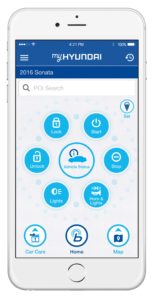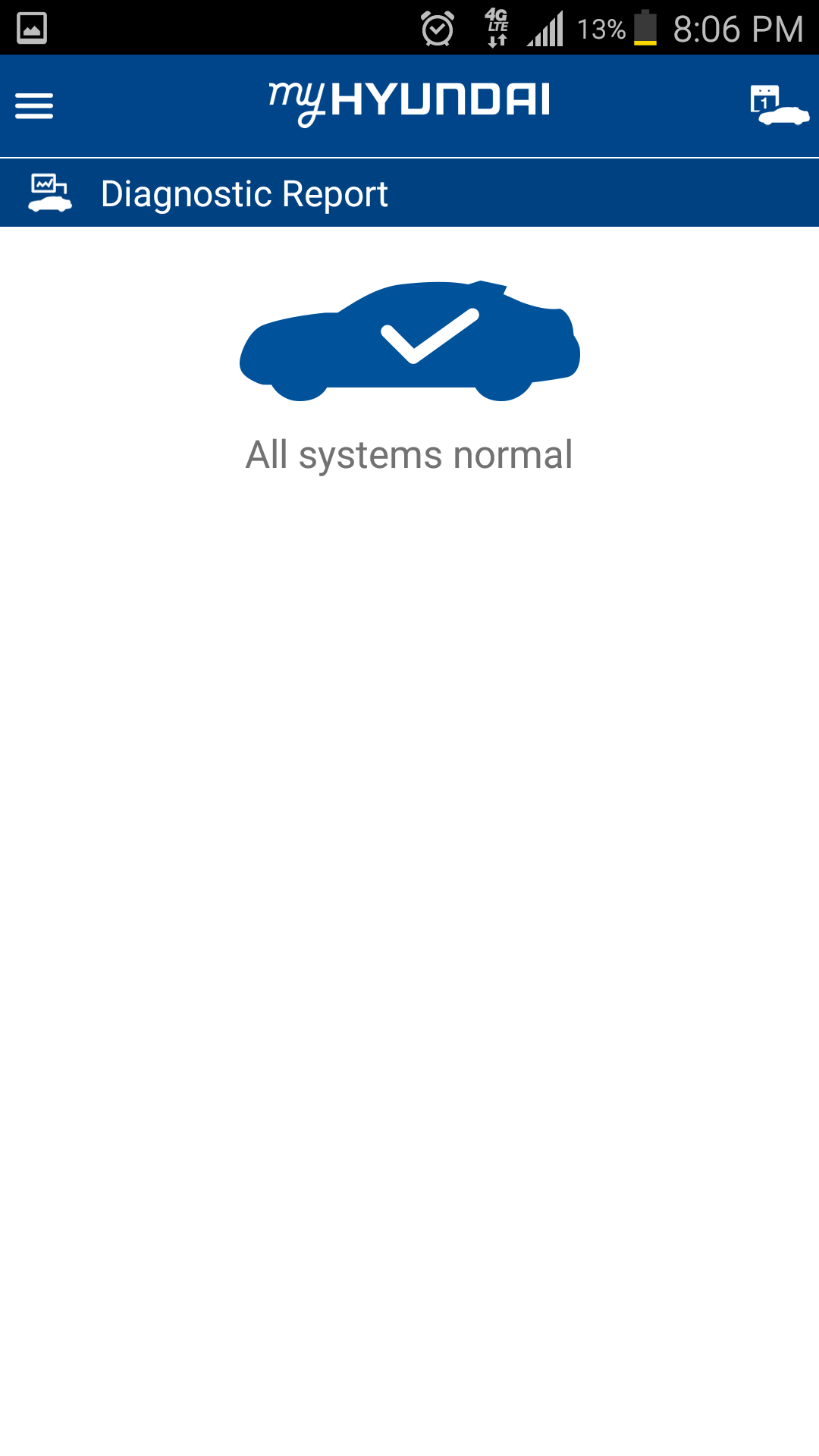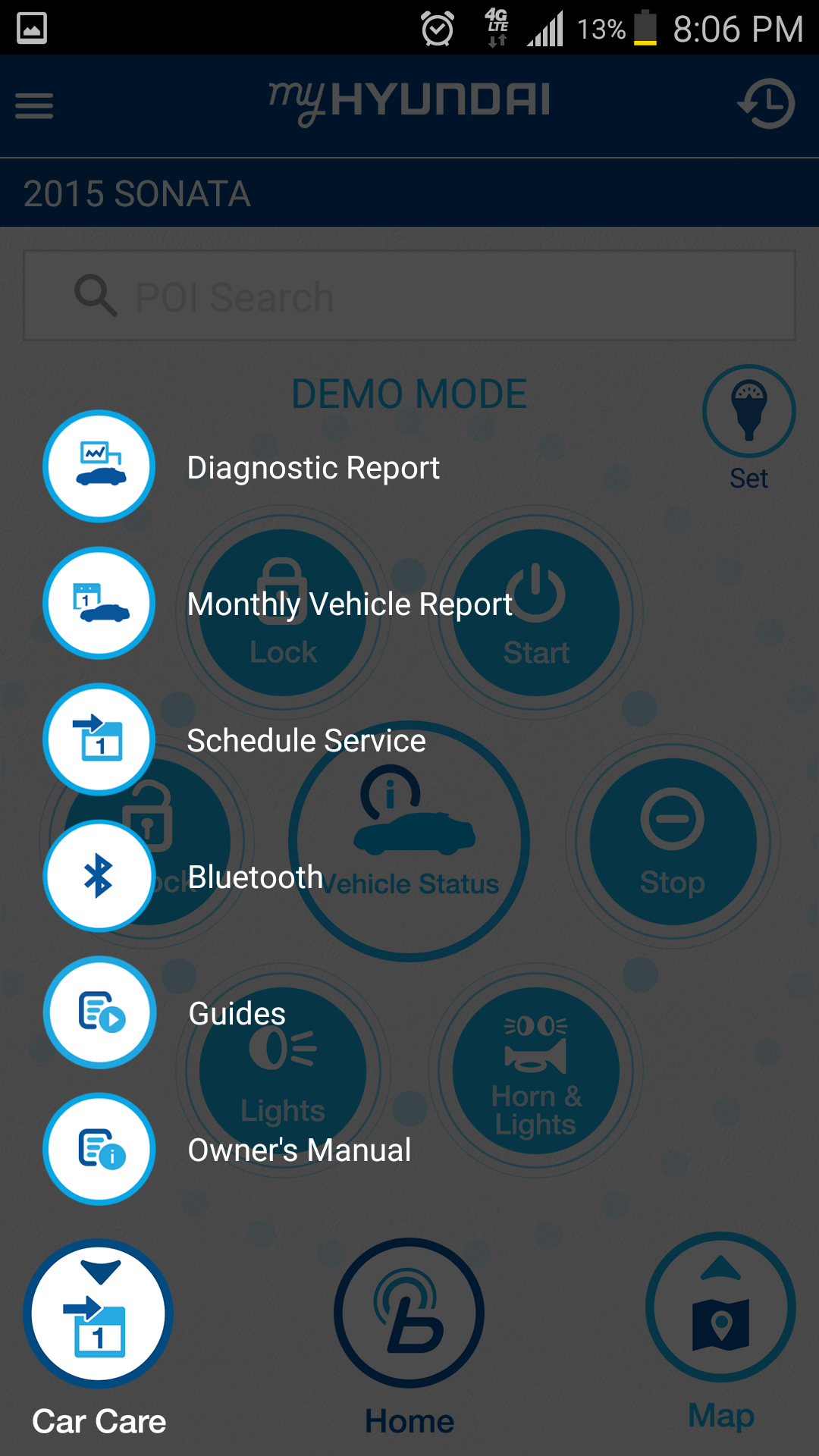
Hyundai app tells driver if DTC is tripped, how urgent the issue is
By onBusiness Practices | Market Trends | Repair Operations | Technology
Though it doesn’t state the actual diagnostic trouble code, Hyundai’s new MyHyundai with Blue Link app will tell a Blue Link subscriber if their vehicle has an active DTC and how severe the problem could be, a connected car staffer said Wednesday.
The app, announced Wednesday, ties the two separate Blue Link and Car Care apps together for a single solution relevant to all Honda owners.
“This MyHyundai app makes it even easier for customers to access Blue Link remote start, schedule service, get vehicle diagnostics and view how-to videos similar to how they can use the MyHyundai.com owner website,” a Hyundai news release states. “It will have additional features in the future.”
“Hyundai is constantly striving to make things better. Bundling all of these great services into one app simplifies and enhances the ownership experience for our customers,” Hyundai Motor America digital business planning and connected operations Executive Director Barry Ratzlaff said in a statement. “The ‘There Is an App for That’ movement has caused a lot of clutter on cellphones and we hope our approach keeps that clutter down to a minimum. Look for Hyundai to continue to deliver more through this one-app solution.”
 C.J. Eckman of Hyundai’s connected car team said Wednesday that the app will tell a user they have a DTC and which broader vehicle system contains the problem.
C.J. Eckman of Hyundai’s connected car team said Wednesday that the app will tell a user they have a DTC and which broader vehicle system contains the problem.
“It won’t tell you specifically what that problem is,” Eckman said. A dealership will still have to check the car. (Given the technical nature and sheer number of DTCs, the specifics might be incomprehensible to the user anyway.)
The app will, however, specify how urgent the issue is, according to Eckman. Based on what code it detects, the app will tell an owner equipped with Blue Link to get the vehicle to a dealership immediately, soon, or when it’s convenient, he said.
Eckman said the app ought to detect the existence of any diagnostic trouble code on a Blue Link subscriber’s vehicle, including the DTCs which naturally develop over the course of a mechanical or collision repair and need to be “cleared” during the final scan of the car. (Kind of like a “cyber-fingerprint,” as Collision Advice CEO Mike Anderson recently described it.)
Either way, a Blue Link owner whose vehicle registered as code-free prior to a collision and repair will certainly know if the shop left a DTC uncleared or failed to correct a problem. Even an owner with an existing, pre-collision “at your earliest convenience” code who receives a second “go to a dealership immediately” or “soon” code following the repair would presumably also know something’s up.
Though the app registers the presence of a diagnostic trouble code, the dashboard lights on the car itself don’t necessarily trigger when a DTC is active, quality, service and technology senior manager and spokesman Miles Johnson confirmed Thursday. So as is also the case with other OEMs’ vehicles, body shops or service departments working on a Hyundai can’t just rely on the dash lights to confirm the car’s electronics are good to go.
 With this in mind and the added scrutiny of the Blue Link app, it behooves a body shop to be aware of best practices for vehicle diagnostics — something the industry has been scrambling to understand this year.
With this in mind and the added scrutiny of the Blue Link app, it behooves a body shop to be aware of best practices for vehicle diagnostics — something the industry has been scrambling to understand this year.
Unlike its sister company Kia and rival OEMs, Hyundai doesn’t have collision repair procedures for the U.S., which makes staying informed trickier for shops. (Hyundai’s working on those documents, though.)
However, the OEM does have manuals for mechanical service and repair — the aftermarket segment which has traditionally handled scanning — and electronic troubleshooting available, and there’s likely some guidance on diagnostics there or by contacting Hyundai’s representatives. I-CAR and its “Ask I-CAR” service might also have some suggestions related to diagnostics (and Hyundai collision repair, too).
Rather than fear the extra scrutiny offered by the My Hyundai app, shops should embrace it as an extra layer of quality control that keeps customers safe and informed. The technology also should help the shops which have been diligent about training, staying informed and delivering a complete repair by shining a light on competitors who’ve been cutting corners.
Shops in Hyundai’s collision repair network might also eventually benefit from the app’s marketing ability should Hyundai expand the dealership locator to include Hyundai-recognized body shops.
That seems like it would be a fairly easy addition, and other rival OEMs with body shop certification managed by Assured Performance have already done it. Assured Performance itself has a Hyundai-recognized body shop locator, and it’s accessible via the MyHyundai.com website.
More information:
“HYUNDAI LAUNCHES NEW ALL-IN-ONE OWNER’S APP TO ENHANCE CUSTOMER EXPERIENCE”
Hyundai, Aug. 24, 2016
Hyundai collision consumer awareness page
Assured Performance Hyundai-recognized locator
I-CAR Hyundai collision repair resources and links
Images:
Hyundai’s myHyundai Blue Link app is shown. (Provded by Hyundai)
The MyHyundai with Blue Link app’s diagnostics section is shown in this screenshot from a demo of the app. (Screenshot of MyHyundai with Blue Link app)
The MyHyundai with Blue Link app’s diagnostics option is shown in this screenshot from a demo of the app. (Screenshot of MyHyundai with Blue Link app)
